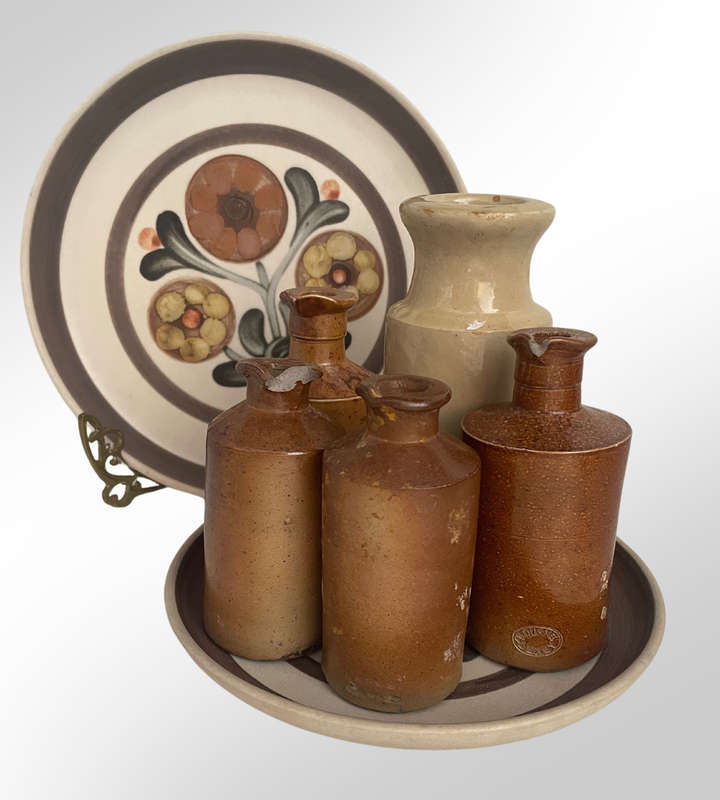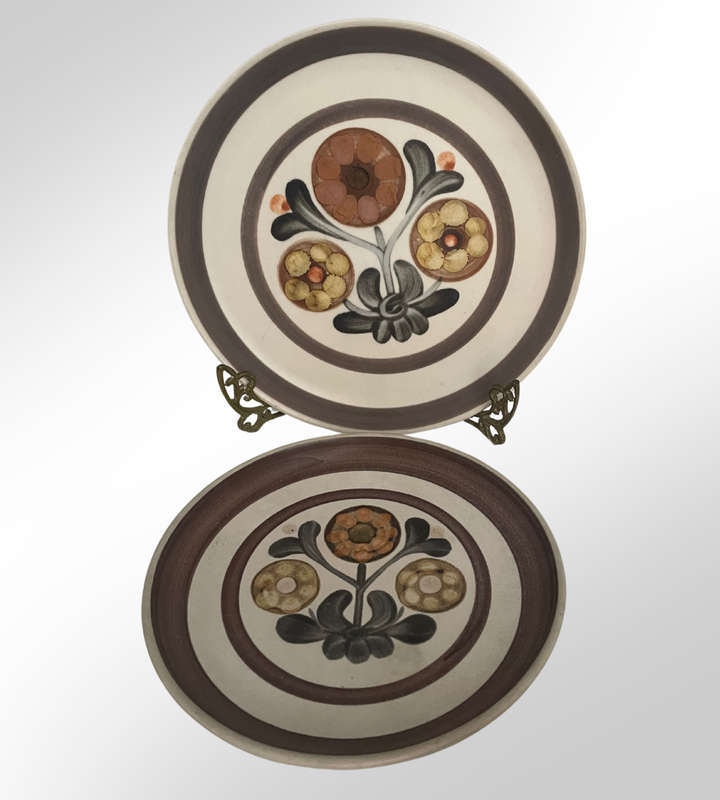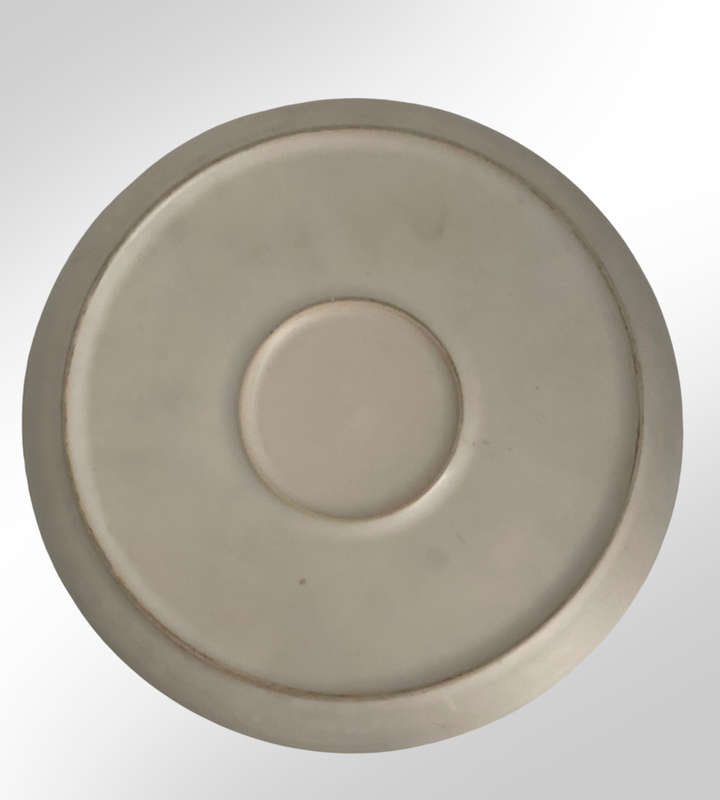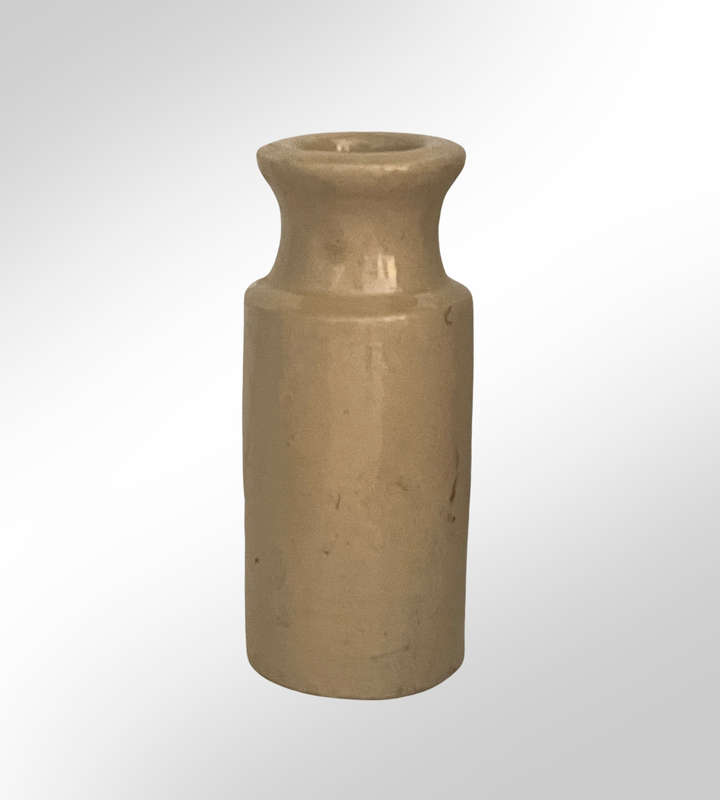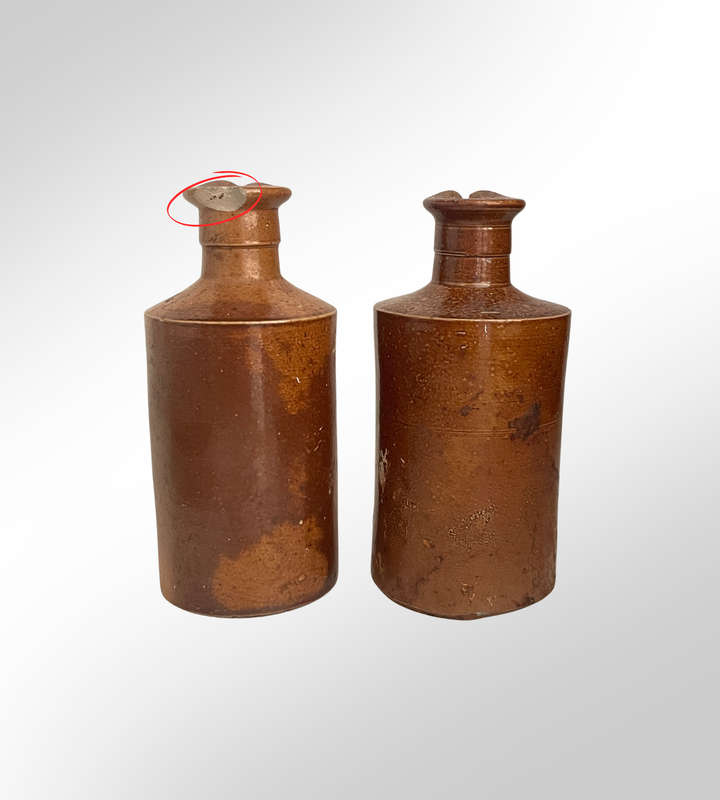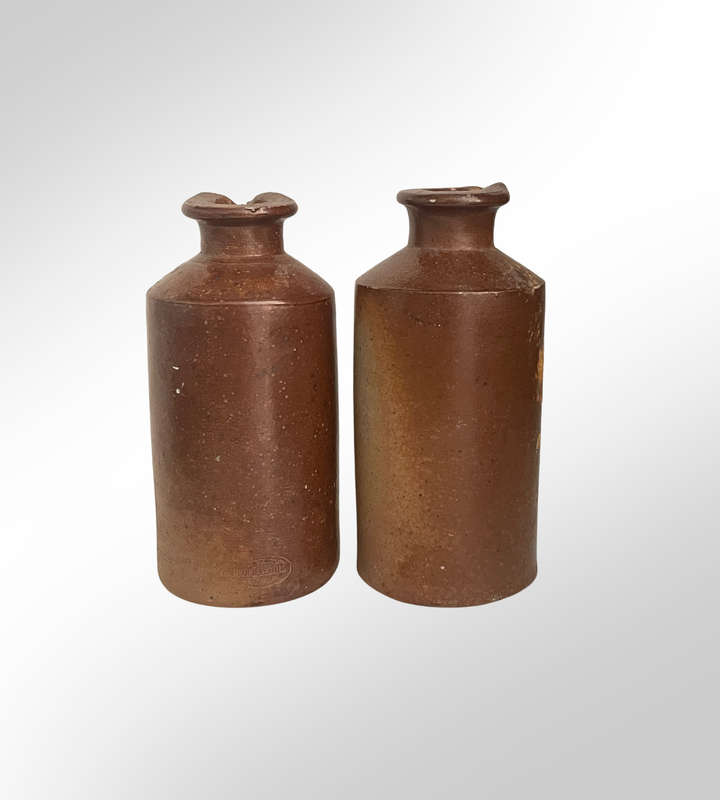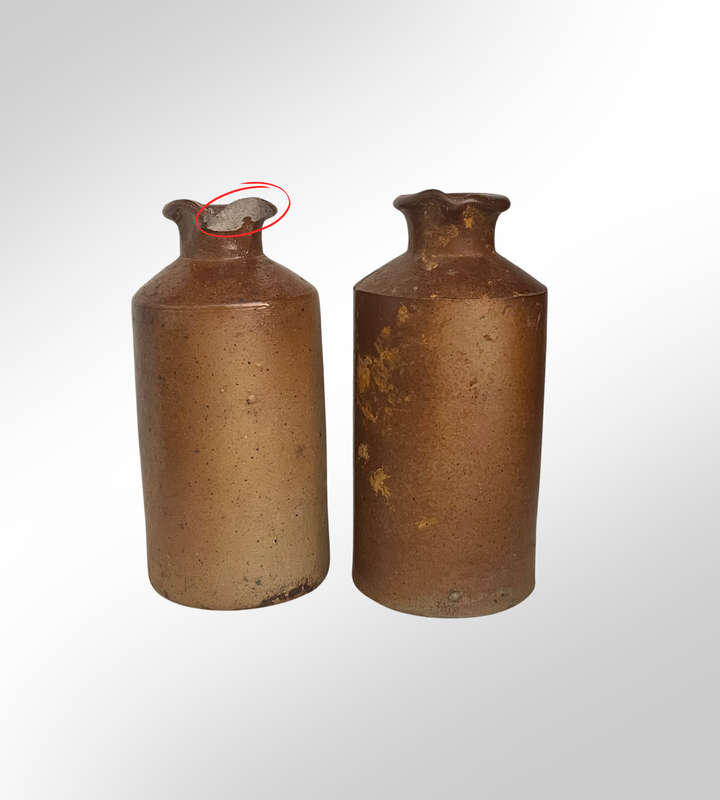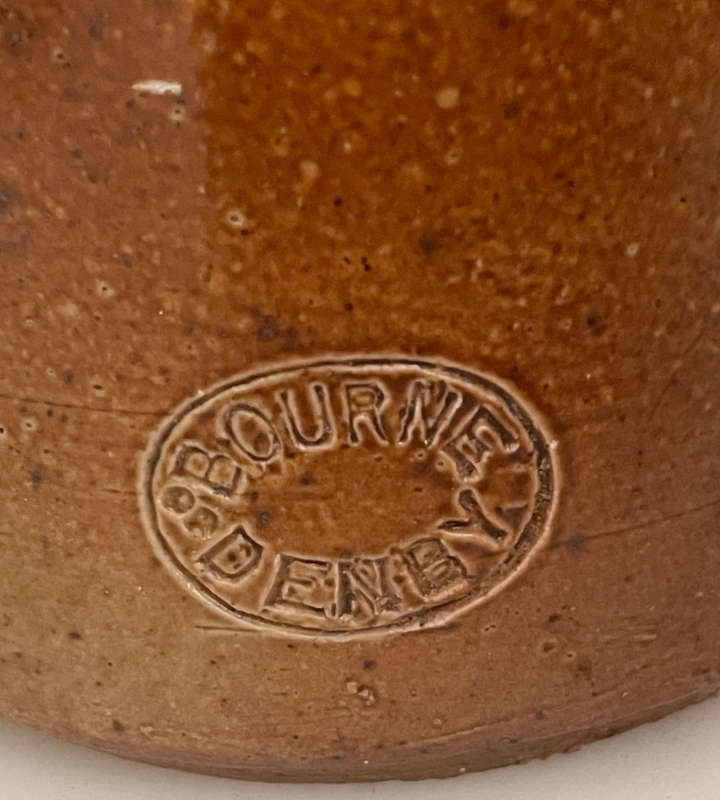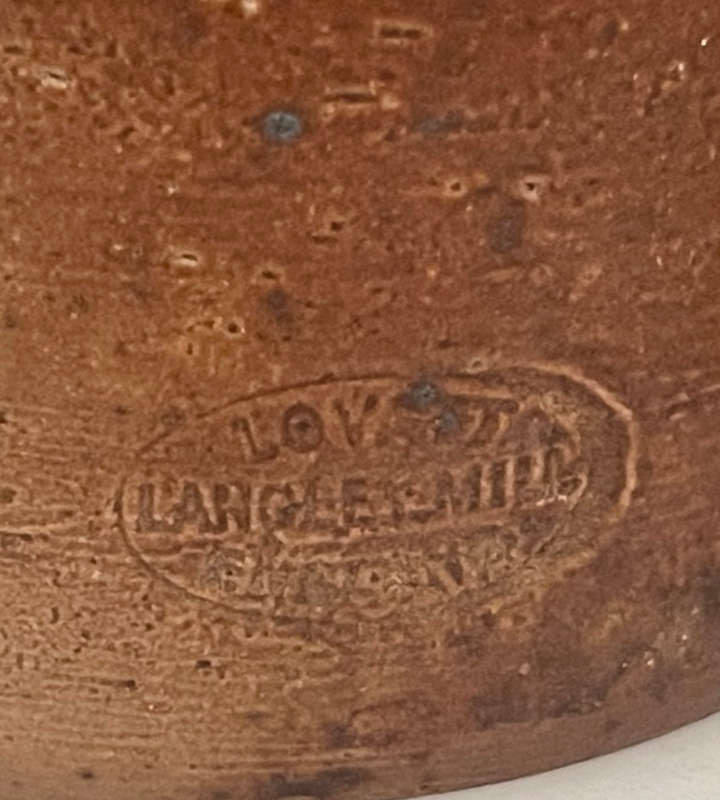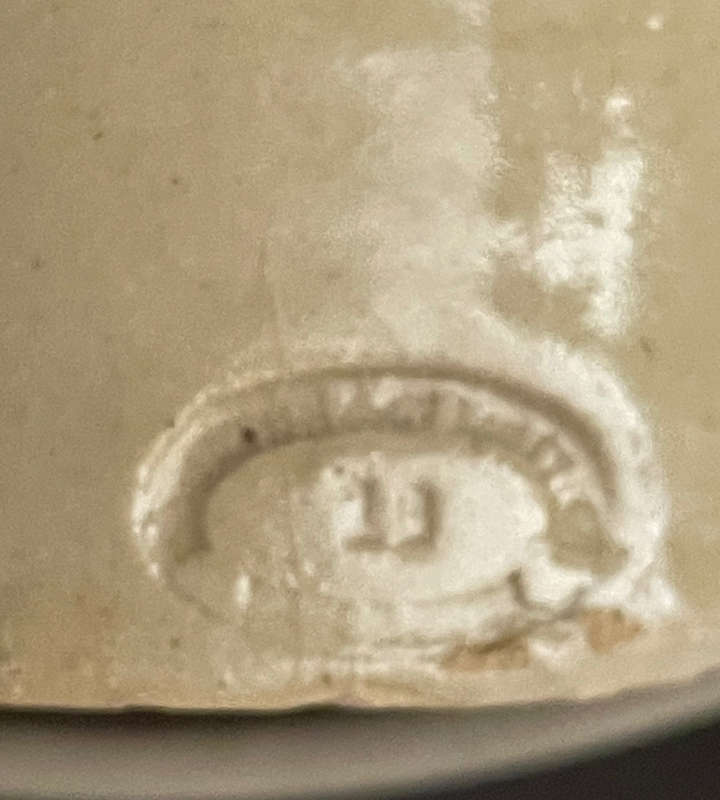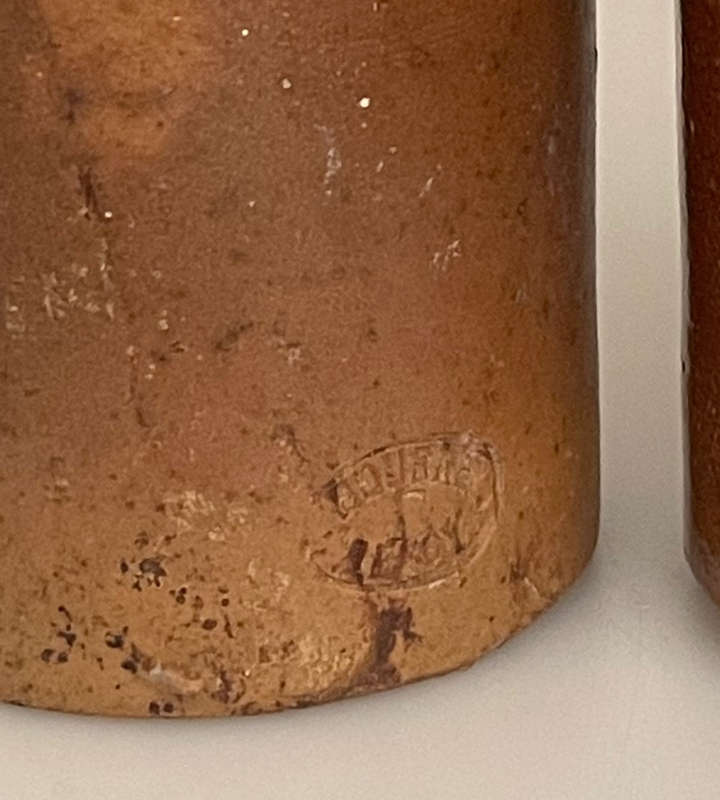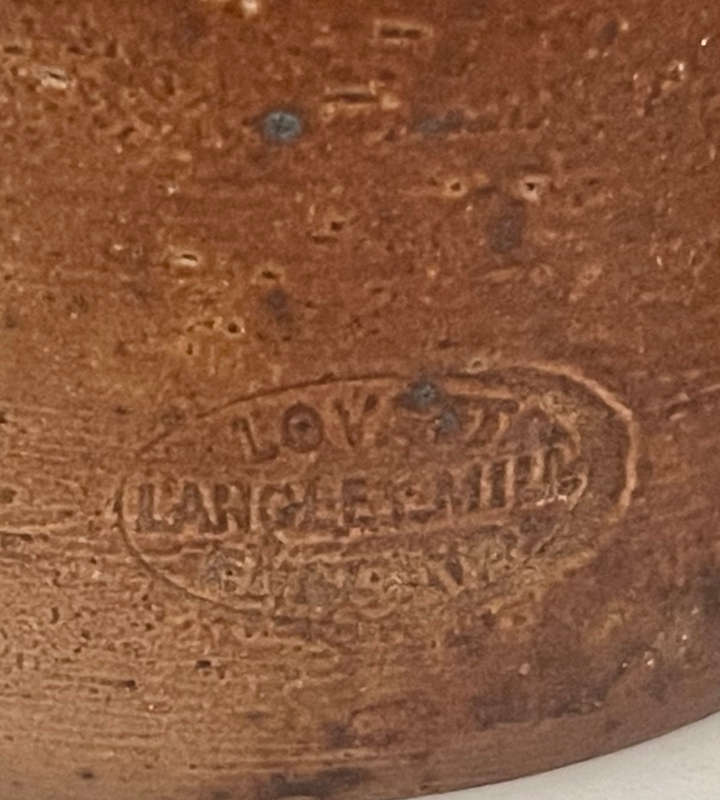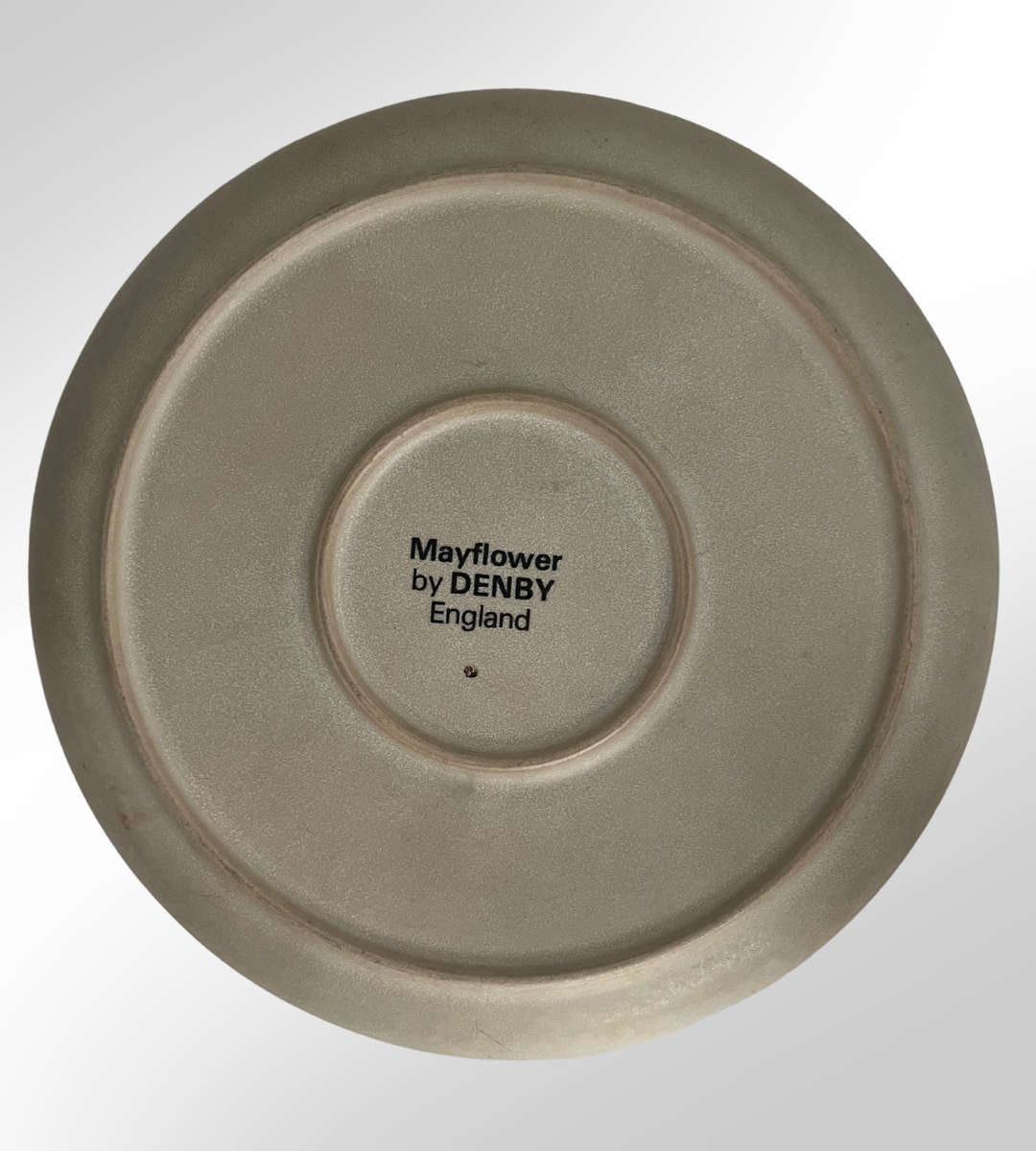Collection of 5 Assorted Vintage Master Ink Bottles & 2 Denby Langley Plates Includes Lovatt, Bourne Denby, & Fulham Pottery
1. Lovatt Salt Glazed Ink Bottle Langley Mill Pottery (c. 1900s):
This charming Lovatt ink bottle from Langley Mill Pottery is a fine example of English stoneware, produced on the Derbyshire-Nottinghamshire border between 1895 and 1930. This 11.5cm high bottle features a traditional salt glaze, with a chipped lip. Langley Mill Pottery was known for producing utilitarian pieces like ink bottles, which were widely used in both domestic and commercial settings during the turn of the century. The salt-glazing process lends the bottle a shiny brown finish thats characteristic of this era.
2.2 x Bourne Denby Brown Stoneware Ink Bottles with Pouring Spouts (c. 19th century):
A pair of brown stoneware ink bottles, each standing 13cm high, featuring distinctive pouring spouts and the stamp of the well-known J. Bourne and Son Ltd. Founded in 1809, the Bourne pottery in Derbyshire produced durable stoneware bottles, often for the ink trade. These pieces feature chips on the lips but remain beautiful examples of salt-glazed pottery. J. Bourne & Son pottery bottles were widely used by ink manufacturers such as P. & J. Arnold, whose products were popular in the US and abroad during the 19th century.
3. Cream-Colored Stoneware Ink Bottle Fulham Pottery (c. 1930s):
This bottle, likely produced by Fulham Pottery, is a cream-colored stoneware piece with visible scuff marks and an unreadable maker's mark. Fulham Pottery, founded in 1672, was famed for producing high-quality, durable stoneware for everyday use. This bottle is typical of the utilitarian pieces created in the 1930s, with its solid form and aged patina.
4. Unreadable Stoneware Ink Bottle Unknown Maker
An 11.5cm tall stoneware ink bottle with no readable makers mark, in solid condition with no chips.
5. 2 x Vintage Denby Langley Mayflower Dinner Plates (1960s-1969):
Included are two classic Denby Langley Mayflower plates, reflecting mid-century modern design. One plate measures 22cm in diameter and features a hand-painted floral pattern in warm brown tones, each slightly unique due to the handcrafting process. The plate is in excellent condition, with no chips, cracks, or crazing, and carries the Denby backstamp.
The second plate is larger at 25.5cm in diameter, unmarked, and ideal as a platter. Both plates are perfect for collectors of mid-century ceramics or those who appreciate the charm of Denbys artistic designs.
Historical Context:
Lovatt & Lovatt / Langley Mill Pottery: Langley Mill Pottery, which operated on the Derbyshire-Nottinghamshire border, produced a range of utilitarian stoneware items between 1895 and 1930. The salt-glazed finish was a hallmark of their production, prized for its durability and distinct finish.
J. Bourne & Son (Denby Pottery): The Bourne family began producing stoneware in 1809, establishing a reputation for sturdy, salt-glazed wares. J. Bourne & Son Ltd became famous for their ink bottles, often used by major ink manufacturers such as P. & J. Arnold. The company's signature brown salt-glazed pottery became a standard in the industry.
Denby Langley Pottery: Known for its beautiful, hand-painted designs, Denbys Mayflower pattern was part of the mid-century movement towards casual dining and artistic ceramics. The Mayflower pattern, produced between the 1960s and 1969, is a great example of Denbys blend of artistry and practicality.
This collection represents a fine assortment of vintage and antique English pottery, perfect for collectors and enthusiasts of historical ceramics.
